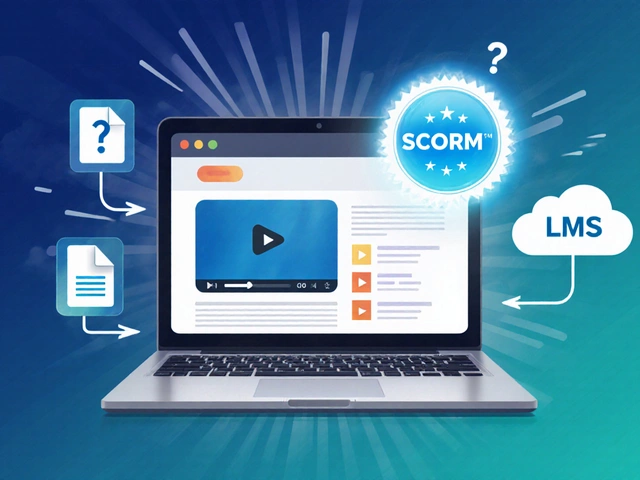
If you throw too much grammar at beginners, you'll see eyes glazing over faster than frying an egg. English is huge, yep, but starting simple is the secret sauce. Forget perfection for now—just help your learner speak, listen, and understand the basics. Your main job is to make things easy, not overwhelming.
Think about this: Kids learn their first language by hearing, guessing, and copying, not by decoding grammar charts. Beginners in English need the same vibe. Simple words, lots of pointing and gestures, short sentences. The goal? Get the message across, not ace a test.
It's not about speaking 'perfect' English from day one. Most folks just want to order food, ask for directions, or make friends. As a teacher, focus on real-life stuff your learner will actually use. Keep things practical and speak slow. This sets up real progress, not just memorizing lists.
- Why Starting Simple Matters
- Setting Up the First Lessons
- Making English Visual and Fun
- Easy Ways to Build Conversation Skills
- Dealing with Common Beginner Mistakes
- Keeping Motivation High
Why Starting Simple Matters
Jumping straight into tricky grammar or long lists of vocabulary can freak out anyone new to English for beginners. There’s a good reason experts push simplicity first. The brain soaks up info best with small, clear steps—especially when you tackle a new language from zero. Research from Cambridge shows that breaking lessons into short, focused bits actually helps learners remember more and stay interested.
When you keep things simple, students build confidence fast. That confidence is like fuel—get a beginner speaking or understanding a few useful words and phrases, and suddenly English feels possible. Overloading them? That just leads to burnout and confusion. Even the world’s top language apps, like Duolingo and Babbel, use the same strategy: Easy, everyday words first. No fancy stuff, just what gets used in real life.
Here’s how you make it work:
- Use short sentences and basic words: Stick to "hello", "thank you", "my name is…" at first. No need for “subjunctive" or "future perfect" anytime soon.
- Build on what’s familiar: Talk about things a student already knows—colors, numbers, family, food. The brain loves a head start.
- Give lots of examples: “This is a pen.” Point. “That is a chair.” Point again. It’s simple but it sticks.
If you’re teaching adults, don’t skip on everyday needs—ordering coffee, asking for directions, or shopping. For kids, focus on things they see and use all the time.
| Simple Start | Tough Start |
|---|---|
| "What is your name?" | "What would your name be if you could choose any?" |
| "This is my book." | "This book belongs to me and was given by my uncle who lives abroad." |
So, in teach English lessons, simple isn’t lazy. It’s smart. You want your students to get the basics down cold—and fast—before they tackle anything big. That’s how they stay hooked and actually use what they learn.
Setting Up the First Lessons
Nailing the first few lessons is huge. These set the tone and build confidence for beginners. Don’t overthink the plan—start with basics every new English speaker needs in daily life. Think greetings, introductions, and simple questions. This is where English for beginners really kicks off.
Always prep with a clear goal. For lesson one, the target could be: “Say your name and ask for someone else’s.” It’s basic but super useful. When you keep the target clear, it’s way easier for both you and your learner to see progress.
- Use visuals: Flashcards with faces for names, or pictures of objects for vocabulary (like 'apple', 'pen', 'book'). Images help the brain remember stuff faster.
- Keep words short and high-frequency: Words like "hello," "name," "I am" make up a big chunk of beginner conversations. Skip the fancy vocab for now.
- Practice out loud: Get learners speaking, not just listening. Try easy role-plays, like meeting someone new or ordering a drink.
- Repeat and review: Recycle last lesson’s words at the start of each new class. Repetition cements it.
Real talk: 80% of English used in daily chats comes from just 1000 words, according to Oxford’s dictionary team. So there’s way less to cover than you might think. Focus on the essentials and you’ll save everyone time and headaches.
If you’re running multiple lessons, make a simple checklist for each one. What’s the new target? What’s being reviewed? What speaking activity will you use? This makes your beginner English guide flow smoother and helps the student see what’s coming next.
| Lesson Focus | Key Phrases | Activity Idea |
|---|---|---|
| Greetings | Hello, Hi, Good morning | Greeting each other in pairs |
| Introductions | My name is..., What's your name? | Fill-in-the-blank name cards |
| Simple Questions | How are you?, Where are you from? | Walking survey asking classmates |
Whenever possible, tie the lesson to something practical. If your student loves soccer, use that for questions and examples. You’re not only teaching English for beginners, but also showing how it connects to their world. That’s how lessons actually stick.
Making English Visual and Fun
Ever noticed how much easier it is to remember a picture than a list of words? For English for beginners, visuals are a lifesaver. They're not just extra fluff—science backs this up. According to the Dual Coding Theory, combining words with pictures doubles your chances of remembering stuff. That’s why flashcards, real-life objects, and videos work way better than just talking or writing.
Here’s something from Dr. Stephen Krashen, known for his work in language learning:
"Comprehensible input—when language learners understand what they see or hear—makes learning stick."Give your students stuff they can see or touch, and you’ll see the difference.
- Flashcards: Pictures + simple words. Show a card with an apple and say “apple.” Let learners say it, touch it, or even taste it if you have real fruit around.
- Videos: Short clips show how words pop up in real life. Choose cartoons or scenes with clear actions (“jump,” “run,” “eat”).
- Real objects: Bring actual things—cups, pens, hats—so students connect words with things right in front of them.
- Drawing and doodles: Not an artist? Doesn’t matter. Even stick figures help explain verbs and feelings.
Want proof it works? A study from the University of Iowa found that teaching English with visuals boosted learning speed by 40%. Here’s a handy look at some popular tools and how they help:
| Tool | Why it Works |
|---|---|
| Flashcards | Quick memory boosters, great for group games |
| Videos | Shows language in action, connects sound and visual |
| Objects | Makes abstract words concrete for beginners |
| Drawings | Personalizes lessons, helps with tricky concepts |
Don’t get stuck using only one method. Mix it up. Start a lesson with a video, review with flashcards, and wrap up with a drawing game. When it feels like play, your learners forget they’re “studying” at all, which is when real progress sneaks in.

Easy Ways to Build Conversation Skills
Kicking off real conversations is a huge win for any English for beginners class. Sitting through grammar drills is about as fun as watching paint dry, but chatting about daily stuff? That gets beginners talking fast. The trick is, start small and make it safe to speak up—even if sentences aren't perfect.
Begin with everyday topics every beginner can relate to: food, family, and hobbies. Choose words and questions that show up in daily life. In 2022, a study by Cambridge English found that more than 60% of successful language learners practiced using set phrases for these topics. Patterns and repetition build confidence—and memory.
- Role plays: Set up pretend situations like ordering at a restaurant, buying a bus ticket, or introducing themselves to a new friend. Let them swap roles and keep the words simple.
- Question games: Get them to ask and answer simple questions. For example, “What is your favorite food?” or “Where do you live?” Grab a soft ball and toss it around the room—whoever catches it has to answer.
- Fill-in-the-blank: Give a short sentence with a missing word: “I am from ___.” Learners fill in with their info and try saying it aloud. It’s easy, and it helps them make real sentences.
- Echo practice: Pick a phrase, say it, and have everyone repeat. This helps with pronunciation and rhythm. Over time, add new phrases based on what they need most.
Another pro tip: Use visuals. Show pictures and have students describe what they see—or even better, let beginners draw and label simple scenes. Visuals make new words stick, and that boosts conversation skills.
Want progress you can see? Track how often students speak up. Even a small table works:
| Week | Avg. student turns per lesson |
|---|---|
| Week 1 | 2-3 |
| Week 4 | 8-10 |
It’s normal if beginners get stuck or mess up. The goal is to keep them talking. Celebrate small wins—like answering a question or trying a new phrase. Over time, the simple act of speaking is what takes them from shy to actually communicating in real-life situations.
Dealing with Common Beginner Mistakes
Every English for beginners class runs into the same slip-ups—and that's totally normal. Most students mess up articles like “a” and “the,” swap verb tenses, or put words in the wrong order. Instead of drilling rules, help them catch these mistakes in context.
One big one? Using “he” for “she” or mixing up “his” and “her.” This happens a lot for learners whose first language doesn’t use gendered pronouns. Don’t just correct them—repeat what they said, but the right way. Over time, they’ll start picking it up naturally.
Another pain point is pronunciation. Sounds like “th” in “think” or “v” and “w” can trip up beginner English learners for months. It helps to exaggerate the sound and give lots of quick, silly practice. If you want to see progress, record your students’ voices every few weeks—a lot of teachers notice about 80% improvement in clarity just by doing this simple check-in.
Mixing up word order is another classic. For example, students might say “I to school go,” which is a word-for-word translation from their own language. To fix this, encourage short, full sentences and model correct answers. Let them fill in blanks, finish simple sentences, or rearrange words.
- Stick to short, real-life examples: "I am hungry," "She is here," "We like music."
- Use lots of repetition and familiar routines.
- Try pair practice so they hear mistakes from someone else (which often helps them spot their own).
Writing can also trip them up—simple spelling and confusing letters like "b" and "d." Don’t fuss over every misspelled word. Instead, show the correct version and keep going. The aim is communication, not perfection.
Here’s a quick snapshot of mistakes most new learners make, and a practical fix for each:
| Mistake | Example | Quick Fix |
|---|---|---|
| Mixing up "he" and "she" | "He is my sister." | Repeat the correct sentence: "She is my sister." |
| Wrong word order | "You are teacher good." | Model correct answer: "You are a good teacher." |
| Pronunciation errors | “Sank you” for “thank you” | Exaggerate the “th,” offer simple practice drills |
| Verb tense mix-ups | "Yesterday I go to school." | Offer the right tense in context: "Yesterday I went to school." |
| Dropping articles | "I have cat." | Model the sentence: "I have a cat." |
Catching and fixing these issues early makes the rest of the ride much smoother. The key is patience, modeling, and keeping things practical in your teach English lessons. Progress takes time, but every small correction adds up fast.
Keeping Motivation High
Boredom and frustration are the top enemies for anyone learning English, especially beginners. The trick is to keep things exciting, varied, and just tough enough to make progress feel clear. Here’s the deal: more than 60% of language learners quit because they feel stuck or don’t see results quickly. So, it really pays off to put motivation front and center.
What actually keeps people coming back to English speaking courses? Small wins. Celebrate every phrase spoken, every new word remembered. Use a reward system—a sticker chart, a quick game, or simply a “Nice job!”—to mark those wins. When progress is visible, energy stays up.
- Mix up lesson styles: Combine talking, writing, drawing, and listening. This stops things from getting stale.
- Set clear micro-goals: Instead of “Learn English,” try “Order coffee in English this week.” Achievable targets work wonders.
- Keep lessons real-life: Turn words into actions, like labeling household items, writing short messages, or making practice calls.
- Bring in fun: Use songs, short videos, or memes—anything that gets laughs or starts a real conversation.
Don’t be afraid to ask what your learner enjoys. Someone who loves soccer will light up if they’re practicing English using their favorite sport.
Here’s a quick look at what drives people to stick with English for beginners:
| Motivation Booster | Effectiveness (%) |
|---|---|
| Visible progress (tracking wins) | 72% |
| Fun, variety in lessons | 64% |
| Personal interest topics | 58% |
| Social interaction | 55% |
Finally, let beginners know it’s okay to make mistakes. Remind them everyone messes up—and laugh about it together. That’s how strong habits (and less stress) are built in any English speaking course.







